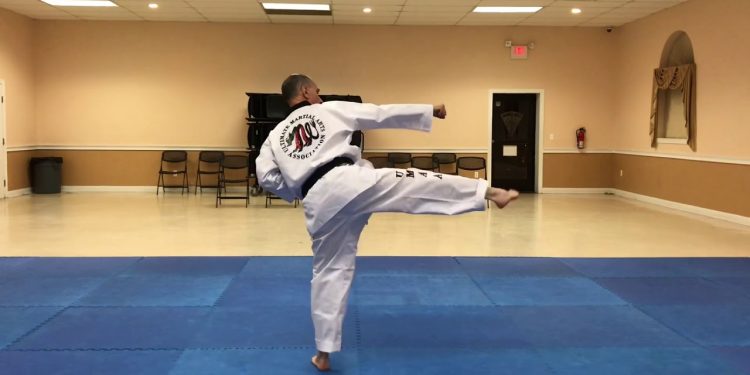We all know that reaching the pinnacle of martial arts is not an overnight journey. The path of achieving the different levels of black belt is one embarked upon with dedication and grit. But what exactly does it mean to earn a black belt, and what’s beyond it? Diving into the fabric of this martial arts milestone reveals an intricate tapestry of tradition, discipline, and skill.
Every martial art discipline has its unique structure of black belt levels, known as “Dan” in Japanese or “Dan ranking system.” Whether it’s Judo, Karate, Taekwondo, or Brazilian Jiu-Jitsu, each has its own narrative marking the journey of a practitioner from a mere student to a master. But, let’s kick things off, shall we?
The Black Belt: More Than Just a Color
So, why the fuss about a black belt? Honestly, it’s not just about the piece of dark fabric around one’s waist. Historically, the black belt symbolized martial arts mastery. In Japanese culture, it was the pinnacle of dedication and perseverance. You know what? Even the color black holds a significant symbolism in many Eastern philosophies—representing the most profound learning.
Here’s a fun fact: In some ancient traditions, students dyed their belts in darker shades as they progressed. The blackest belt showcased one’s experience—a journey marked literally on the fabric they wore. Let me elucidate further on the genesis of these different Dan levels.
A Journey Through Dan Levels
The concept of Dan rankings, attributed to Judo founder Jigoro Kano, wasn’t originally meant to stratify students but to provide a structured progression. The black belt acknowledges reaching the first Dan, but that’s simply scratching the surface. As practitioners pursue higher Dan levels, these belts signify deeper understanding, greater skill, and significant contribution to the martial art.
1. First Dan: The Beginning of Mastery
You’d think earning your first Dan means you’ve reached the peak—wrong! It marks the beginning of a long journey. It’s the threshold where one truly starts to learn and apply teachings independently.
2. Second and Third Dan: Refinement
Pushing through the second and third Dan levels demands proficiency. Martial artists refine their techniques, transitioning from quantity to quality. This stage often involves teaching junior students, emphasizing the saying, “To teach is to learn twice.”
3. Fourth and Fifth Dan: The Teacher’s Path
These levels pivot towards becoming an instructor or master. At this stage, individuals are acknowledged as sensei or sabumnim, depending on the discipline. The focus shifts towards teaching, preserving martial art culture, and developing personal styles.
4. Sixth to Tenth Dan: The Mastery and Beyond
The upper echelons of the Dan levels can be equivalent to professorship in academia. Historically archived as the levels of mastery, these belts are less frequently awarded. Some martial arts systems only bestow ninth or tenth Dan posthumously, underscoring their rarity.
Think about this: Judo’s highest honor, the tenth Dan, is often represented by a red belt, yet it carries a weight beyond color—a legacy of mastery.
The Role of Age and Experience: Timelines Matter
What’s the rush, anyway? Climbing the ranks isn’t a sprint to the finish. Ideally, time and experience are primary factors. There are age requirements, and specific time intervals often dictate eligibility for higher Dan levels. For instance, progressing from the first to second Dan might necessitate a few years of practice, ensuring robust skill establishment.
Comparing Across Disciplines: Not a One-Size-Fits-All
Now, here’s an idea—compare various martial arts, and you’ll see their approach varies, but the journey is somewhat unified in principle. Take Taekwondo, which uses the same multi-Dan system but emphasizes different skills compared to, say, Karate.
| Martial Art | Dan Levels | Focus Areas |
|---|---|---|
| Karate | 10 Dan | Striking, Katas |
| Judo | 10 Dan | Grappling, Throws |
| Taekwondo | 9 Dan | Kicking Techniques, Sparring |
| Brazilian Jiu-Jitsu (BJJ) | 6 to 10 Dan | Ground Fighting, Submissions |

If Walls Could Talk: Insights and Anecdotes
Did you know? Some martial artists believe the time taken to earn a Dan belt correlates with one’s potential for mastery. This isn’t a straight path. Renowned masters like Gichin Funakoshi often had unique journeys, spending years mastering intricacies, before pivotal realizations.
FAQs: Your Martial Curiosities Answered
What’s the secret to advancing in black belt ranks? No secrets, really. Just consistent effort over time.
Are all martial arts the same in belt promotions? Nope, they differ. Each has its procedures and criteria.
How long does it take on average? It varies significantly; some reach first Dan in 5 years, while higher ranks may take decades.
Tips for Your Martial Arts Journey
Encountering hurdles? That’s part of the process. Anticipate challenges and approach them with the spirit of perseverance. Engage with senseis and fellow students—prove to be both a learner and an educator simultaneously.
- Consistency is key: Regular practice embeds learning.
- Learn from losses: Failed attempts are stepping stones to success.
- Balance technique with philosophy: Master both martial art moves and the ethos behind them.
In Conclusion: The Ever-evolving Martial Artist
Frankly, achieving every black belt level is about personal evolution. From a novice to an adept practitioner, each step carries profound insights and rich learning. Beyond mastery, it’s an endless journey of growth and exploration. Thanks for reading, and do explore our other insights on martial arts and self-discipline. Embrace this journey with dedication, as each belt is but a continuation, not a completion.















